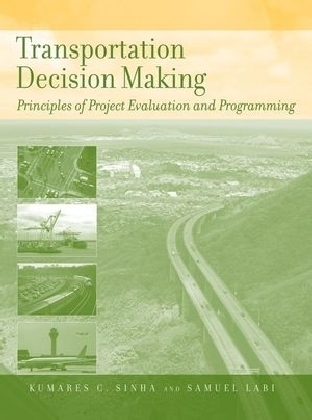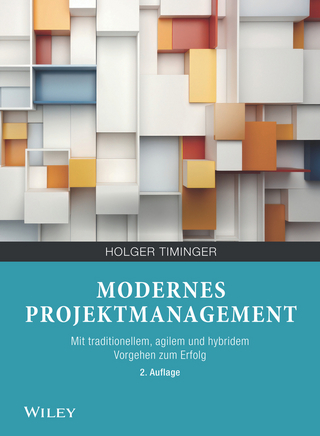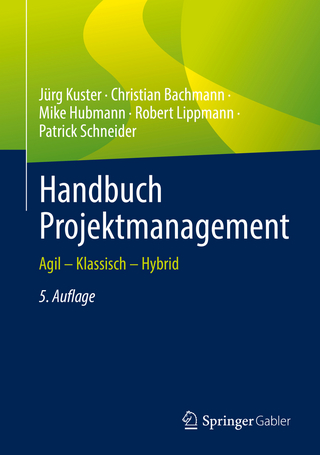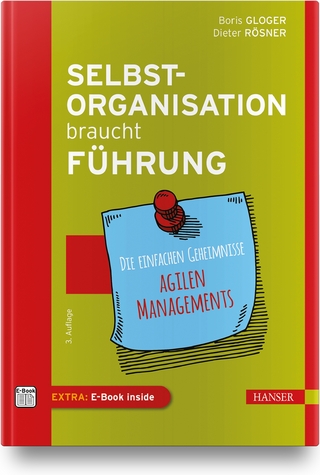
Transportation Decision Making
John Wiley & Sons Inc (Verlag)
978-0-471-74732-1 (ISBN)
- Titel z.Zt. nicht lieferbar
- Versandkostenfrei innerhalb Deutschlands
- Auch auf Rechnung
- Verfügbarkeit in der Filiale vor Ort prüfen
- Artikel merken
This pioneering text provides a holistic approach to decision making in transportation project development and programming, which can help transportation professionals to optimize their investment choices. The authors present a proven set of methodologies for evaluating transportation projects that ensures that all costs and impacts are taken into consideration.
The text’s logical organization gets readers started with a solid foundation in basic principles and then progressively builds on that foundation. Topics covered include:
Developing performance measures for evaluation, estimating travel demand, and costing transportation projects
Performing an economic efficiency evaluation that accounts for such factors as travel time, safety, and vehicle operating costs
Evaluating a project’s impact on economic development and land use as well as its impact on society and culture
Assessing a project’s environmental impact, including air quality, noise, ecology, water resources, and aesthetics
Evaluating alternative projects on the basis of multiple performance criteria
Programming transportation investments so that resources can be optimally allocated to meet facility-specific and system-wide goals
Each chapter begins with basic definitions and concepts followed by a methodology for impact assessment. Relevant legislation is discussed and available software for performing evaluations is presented. At the end of each chapter, readers are provided resources for detailed investigation of particular topics. These include Internet sites and publications of international and domestic agencies and research institutions. The authors also provide a companion Web site that offers updates, data for analysis, and case histories of project evaluation and decision making.
Given that billions of dollars are spent each year on transportation systems in the United States alone, and that there is a need for thorough and rational evaluation and decision making for cost-effective system preservation and improvement, this text should be on the desks of all transportation planners, engineers, and educators. With exercises in every chapter, this text is an ideal coursebook for the subject of transportation systems analysis and evaluation.
KUMARES C. SINHA, PhD, PE, Hon. M.ASCE, is Edgar B. and Hedwig M. Olson Distinguished Professor in the School of Civil Engineering at Purdue University. Dr. Sinha is the Editor-in-Chief of the Journal of Transportation Engineering and a former president of the Transportation and Development Institute of the American Society of Civil Engineers. SAMUEL LABI, PhD, is an assistant professor in the School of Civil Engineering at Purdue University. He is currently a visiting scholar at the Massachusetts Institute of Technology.
Preface
Chapter 1 Introductory Concepts in Transportation Decision Making 1
Introduction 1
1.1 Overall Transportation Program Development 1
1.1.1 Network-Level Planning 1
1.1.2 Project Development 2
1.1.3 Programming 2
1.1.4 Budgeting 2
1.1.5 Financial Planning 2
1.2 The Process of Transportation Project Development 2
1.2.1 PDP Steps 3
1.2.2 Federal Legislation That Affects Transportation Decision Making 5
1.3 Impacts of Transportation System Stimuli 6
1.3.1 Types of Transportation Stimuli 6
1.3.2 Impact Categories and Types 7
1.3.3 Dimensions of the Evaluation 9
1.4 Other Ways of Categorizing Transportation System Impacts 11
1.5 Role of Evaluation in PDP and Basic Elements of Evaluation 12
1.5.1 Role of Evaluation in PDP 12
1.5.2 Reasons for Evaluation 12
1.5.3 Measures of a Project’s Worth 12
1.6 Procedure for Transportation System Evaluation 13
1.6.1 Good Practices in Evaluation 18
Summary 18
Exercises 19
References 19
Chapter 2 Performance Measures in Transportation Evaluation 21
Introduction 21
2.1 Transportation System Goals, Objectives, and Performance Measures 21
2.2 Performance Measures at the Network and Project Levels 22
2.3 Properties of a Good Performance Measure 24
2.4 Dimensions of Performance Measures 25
2.5 Performance Measures Associated with Each Dimension 25
2.5.1 Overall Goals 25
2.5.2 System Objectives 26
2.5.3 Sector Concerns and Interests 29
2.5.4 Flow Entity (Passenger and Freight) 29
2.5.5 Type of Transportation Mode 29
2.5.6 Number of Transportation Modes Involved 30
2.5.7 Entity or Stakeholder Affected 32
2.5.8 Spatial Scope 33
2.5.9 Level of Agency Responsibility 33
2.5.10 Time Frame and Level of Refinement 33
2.6 Linking Agency Goals to Performance Measures: State of Practice 33
2.7 Benefits of Using Performance Measures 33
Summary 34
Exercises 34
References 35
Chapter 3 Estimating Transportation Demand 37
Introduction 37
3.1 Transportation Demand 37
3.1.1 Basic Concepts in Transportation Demand Estimation 37
3.1.2 Causes of Shifts in the Transportation Demand Curve 39
3.1.3 Categorization of Demand Estimation Models 39
3.1.4 Aggregate Methods for Project-Level Transportation Demand Estimation 39
3.2 Transportation Supply 48
3.2.1 Concept of Transportation Supply 48
3.2.2 Causes of Shifts in the Transportation Supply Curve 49
3.3 Equilibration and Dynamics of Transportation Demand and Supply 49
3.3.1 Demand–Supply Equilibration 49
3.3.2 Simultaneous Equation Bias in Demand–Supply Equilibration 49
3.3.3 Dynamics of Transportation Demand and Supply 50
3.4 Elasticities of Travel Demand 50
3.4.1 Classification of Elasticities by the Method of Computation 51
3.4.2 Classification of Elasticities by the Attribute Type 52
3.4.3 Classification of Elasticities by the Relative Direction of Response: Direct and Cross-Elasticities 52
3.4.4 Examples of Elasticity Values Used in Practice 53
3.4.5 Application of the Elasticity Concept: Demand Estimation 56
3.4.6 Consumer Surplus and Latent Demand 57
3.5 Emerging Issues in Transportation Demand Estimation 58
Summary 59
Exercises 59
References 61
Additional Resources 63
Chapter 4 Transportation Costs 65
Introduction 65
4.1 Classification of Transportation Costs 65
4.1.1 Classification by the Incurring Party 65
4.1.2 Classification by the Nature of Cost Variation with Output 65
4.1.3 Classification by the Expression of Unit Cost 66
4.1.4 Classification by Position in the Facility Life Cycle 69
4.1.5 Other Classifications of Transportation Costs 69
4.2 Transportation Agency Costs 69
4.2.1 Agency Costs over the Facility Life Cycle 70
4.2.2 Techniques for Estimating Agency Costs 70
4.2.3 Risk as an Element of Agency Cost 72
4.3 Transportation User Costs 72
4.3.1 User Cost Categories 72
4.3.2 Impacts of Demand Elasticity, Induced Demand, and Other Exogenous Changes on User Costs 73
4.4 General Structure and Behavior of Cost Functions 74
4.4.1 Components of a Transportation Cost Function 74
4.4.2 Economies and Diseconomies of Scale 75
4.5 Historical Cost Values and Models for Highway Transportation Systems 76
4.5.1 Highway Agency Cost Models 76
4.5.2 Transit Cost Values and Models 76
4.5.3 Relationships between Transit Operating Costs, System Size, Labor Requirements, and Technology 89
4.5.4 Air Transportation Costs 89
4.6 Issues in Transportation Cost Estimation 90
4.6.1 Aggregated Estimates for Planning vs. Detailed Engineering Estimates for Projects 90
4.6.2 Adjustments for Temporal and Spatial Variations (How to Update Costs) 90
4.6.3 Adjustments for Economies of Scale 91
4.6.4 Problem of Cost Overruns 92
4.6.5 Relative Weight of Agency and User Cost Unit Values 93
Summary 93
Exercises 94
References 94
Chapter 5 Travel-time Impacts 97
Introduction 97
5.1 Categorization of Travel Time 97
5.1.1 Trip Phase 97
5.1.2 Other Bases for Travel-Time Categorization 98
5.2 Procedure for Assessing Travel-Time Impacts 98
5.3 Issues Relating to Travel-Time Value Estimation 104
5.3.1 Conceptual Basis of Time Valuation 104
5.3.2 Factors Affecting the Travel-Time Value 104
5.3.3 Methods for Valuation of Travel Time 107
5.4 Concluding Remarks 115
Summary 115
Exercises 116
References 117
Additional Resources 118
Appendix A5.1: Estimation of Roadway Capacity Using the HCM Method (TRB, 2000) 118
Appendix A5.2: Estimation of Roadway Operating Speeds Using the HCM Method (TRB, 2000) 120
Appendix A5.3: Travel Times Used in World Bank Projects 123
Chapter 6 Evaluation of Safety Impacts 127
Introduction 127
6.1 Basic Definitions and Factors of Transportation Safety 128
6.1.1 Definition of a Crash 128
6.1.2 Transportation Crashes Classified by Severity 128
6.1.3 Categories of Factors Affecting Transportation Crashes 128
6.2 Procedure for Safety Impact Evaluation 131
6.3 Methods for Estimating Crash Reduction Factors 141
6.3.1 Before-and-After Studies 141
6.3.2 Cross-Sectional Studies 142
6.3.3 Comparison of the Before-and-After and Cross-Sectional Methods 143
6.3.4 Elasticity of Crash Frequency 143
6.4 Safety-Related Legislation 144
6.5 Software Packages for Safety Impact Evaluation of Transportation Investments 144
6.5.1 Interactive Highway Safety Design Model 144
6.5.2 Indiana’s Safety Management System 144
6.6 Considerations in Safety Impact Evaluation 144
Summary 145
Exercises 146
References 147
Additional Resources 148
Appendix A6: Crash Reduction and Accident Modification Factors 149
Chapter 7 Vehicle Operating Cost Impacts 157
Introduction 157
7.1 Components of Vehicle Operating Cost 157
7.1.1 Fuel 157
7.1.2 Shipping Inventory 157
7.1.3 Lubricating Oils for Mechanical Working of the Drivetrain 158
7.1.4 Preservation of the Vehicle–Guideway Contact Surface 158
7.1.5 Vehicle Repair and Maintenance 158
7.1.6 Depreciation 158
7.1.7 VOC Data Sources and Average National VOC Rates 158
7.2 Factors that Affect Vehicle Operating Cost 159
7.2.1 Vehicle Type 159
7.2.2 Fuel Type 160
7.2.3 Longitudinal Grade 161
7.2.4 Vehicle Speed 161
7.2.5 Delay 164
7.2.6 Speed Changes 166
7.2.7 Horizontal Curvature 166
7.2.8 Road Surface Condition 167
7.2.9 Other VOC Factors 169
7.3 Procedure for Assessing VOC Impacts 169
7.3.1 Steps for Assessing the Impacts 169
7.3.2 Implementation of Steps 4 to 6 Using the HERS Method 172
7.4 Special Case of VOC Estimation: Work Zones 176
7.5 Selected Software Packages that Include A VOC Estimation Component 176
7.5.1 AASHTO Method 176
7.5.2 HERS Package: National and State Versions 176
7.5.3 HDM-4 Road User Effects 176
7.5.4 Surface Transportation Efficiency Analysis Model 177
7.5.5 Other Models That Include a VOC Estimation Component 177
7.6 Comparison of VOC Estimation Methods and Software 177
7.6.1 Levels of Detail 177
7.6.2 Data Sources 177
Summary 178
Exercises 178
References 179
Additional Resources 180
Appendix A7.1: FHWA (2002) HERS Models for VOC Computation 180
Appendix A7.2: VOC Component Unit Costs 194
Appendix A7.3: Pavement Condition Adjustment Factors 194
Chapter 8 Economic Efficiency Impacts 197
Introduction 197
8.1 Interest Equations and Equivalencies 197
8.1.1 Cash Flow Illustrations 197
8.1.2 The Concept of Interest 197
8.1.3 Types of Compounding and Interest Rates 198
8.1.4 Interest Equations and Key Variables 199
8.1.5 Special Cases of Interest Equations 202
8.2 Criteria for Economic Efficiency Impact Evaluation 204
8.2.1 Present Worth of Costs 204
8.2.2 Equivalent Uniform Annual Cost 204
8.2.3 Equivalent Uniform Annual Return 204
8.2.4 Net Present Value 205
8.2.5 Internal Rate of Return 205
8.2.6 Benefit–Cost Ratio 205
8.2.7 Evaluation Methods Using Incremental Attributes 206
8.2.8 General Discussion of Economic Efficiency Criteria 207
8.3 Procedure for Economic Efficiency Analysis 207
8.4 Software Packages for Economic Efficiency Analysis 209
8.4.1 Surface Transportation Efficiency Analysis Model 209
8.4.2 MicroBenCost Model 209
8.4.3 Highway Development and Management Standards Model 210
8.4.4 Highway Economic Requirements system 210
8.4.5 California DOT’S Cal-B/C System 210
8.5 Life-Cycle Cost Analysis 210
8.6 Case Study: Economic Efficiency Impact Evaluation 210
8.7 Final Comments on Economic Efficiency Analysis 212
Summary 213
Exercises 213
References 215
Additional Resources 216
Appendix A8 216
Chapter 9 Economic Development Impacts 229
Introduction 229
9.1 Economic Development Impact Types 229
9.1.1 Economic Development Impact Types 229
9.1.2 Economic Development Impact Mechanisms 230
9.1.3 Selection of Appropriate Measures of Economic Impact 230
9.2 Tools for Economic Development Impact Assessment 231
9.2.1 Surveys and Interviews 232
9.2.2 Market Studies 235
9.2.3 Comparative Analysis Tools: Case Studies 235
9.2.4 Economic Multiplier/Input–Output Models 237
9.2.5 Statistical Analysis Tools 239
9.2.6 Economic Simulation Models 240
9.3 Estimation of Long-term Regional Economic Development Impacts 241
9.4 Case Study: Economic Development Impact Assessment 244
Summary 246
Exercises 246
References 247
Additional Resources 249
Chapter 10 Air Quality Impacts 251
Introduction 251
10.1 Air Pollution Sources and Trends 251
10.1.1 Pollutant Types, Sources, and Trends 251
10.1.2 Categories of Air Pollution 254
10.2 Estimating Pollutant Emissions 254
10.2.1 Some Definitions 254
10.2.2 Factors Affecting Pollutant Emissions from Motor Vehicles 254
10.2.3 Approaches for Estimating Pollutant Emissions from Highways 256
10.2.4 Procedure for Estimating Highway Pollutant Emissions 258
10.2.5 Software for Estimating Pollutant Emissions 261
10.3 Estimating Pollutant Concentration 265
10.3.1 Factors Affecting Pollutant Dispersion 265
10.3.2 Pollutant Dispersion Models 266
10.3.3 Software for Estimating Pollutant Dispersion and Concentrations 270
10.4 Air Pollution from Other Modes 271
10.4.1 Air Transportation 271
10.4.2 Rail Transportation 273
10.4.3 Marine Transportation 273
10.4.4 Transit (Various Modes) 273
10.5 Monetary Costs of Air Pollution 274
10.5.1 Methods of Air Pollution Cost Estimation 274
10.5.2 Air Pollution Cost Values 275
10.6 Air Quality Standards 276
10.7 Mitigating Air Pollution from Transportation Sources 276
10.8 Air Quality Legislation and Regulations 277
10.8.1 National Legislation 277
10.8.2 Global Agreements 278
Summary 278
Exercises 278
References 279
Additional Resources 280
Appendix A10.1: Using MOBILE6 to Estimate Emissions 280
Appendix A10.2: Values of the Gaussian Distribution Function 284
Chapter 11 Noise Impacts 287
Introduction 287
11.1 Fundamental Concepts of Sound 287
11.1.1 General Characteristics 287
11.1.2 Addition of Sound Pressure Levels from Multiple Sources 288
11.2 Sources of Transportation Noise 290
11.3 Factors Affecting Transportation Noise Propagation 290
11.3.1 Nature of Source, Distance, and Ground Effects 291
11.3.2 Effect of Noise Barriers 292
11.4 Procedure for Estimating Noise Impacts for Highways 292
11.5 Application of the Procedure using the FHWA Model Equations 293
11.5.1 Reference Energy Mean Emission Level 295
11.5.2 Traffic Flow Adjustment 295
11.5.3 Distance Adjustment 295
11.5.4 Adjustment for Finite-Length Roadways 295
11.5.5 Shielding Adjustment 296
11.5.6 Combining Noises from Various Vehicle Classes 299
11.6 Application of the Procedure Using the Traffic Noise Model (TNM) Software Package 300
11.6.1 The Traffic Noise Model 300
11.7 Estimating Noise Impacts for Other Modes 301
11.7.1 Transit Noise and Vibration 301
11.7.2 Air Transportation 301
11.7.3 Rail Transportation 301
11.7.4 Marine Noise 303
11.7.5 General Guidelines for Noise Impact Evaluation of New Transportation Improvements 303
11.8 Mitigation of Transportation Noise 304
11.8.1 Noise Barrier Cost Estimates 305
11.9 Legislation and Regulations Related to Transportation Noise 306
Summary 308
Exercises 308
References 309
Additional Resources 310
Appendix A11: Noise Attenuation Charts by Barriers Defined by
N 0 , φ L ,andφ R 310
Chapter 12 Impacts on Wetlands and other Ecosystems 313
Introduction 313
12.1 Basic Ecological Concepts 313
12.1.1 Concept of Ecosystems 313
12.1.2 Physical Base 314
12.1.3 Wetland Ecosystems 314
12.2 Mechanisms of Ecological Impacts 315
12.2.1 Direct vs. Indirect Mechanisms 315
12.2.2 Impact Mechanism by Species Type 315
12.3 Ecological Impacts of Activities at Various PDP Phases 315
12.3.1 Locational Planning and Preliminary Field Surveys 316
12.3.2 Transportation System Design 319
12.3.3 Construction 319
12.3.4 Operations 319
12.3.5 Maintenance 320
12.4 Performance Goals for Ecological Impact Assessments 320
12.4.1 Diversity of the Physical Base of the Ecosystem 320
12.4.2 State of Habitat Fragmentation 320
12.4.3 Significant Species and Habitats 321
12.4.4 Diversity of Species 321
12.4.5 Ecosystem Stability 321
12.4.6 Ecosystem Quality or Productivity 322
12.5 Procedure for Ecological Impact Assessment 322
12.6 Key Legislation 329
12.6.1 Endangered Species Act of 1973 329
12.6.2 Laws Related to Wetlands and Other Habitats 329
12.7 Mitigation of Ecological Impacts 329
12.7.1 Mitigation at Various Phases of the Project Development Process 331
12.8 Methods and Software Packages for Ecological Impact Assessment 332
12.8.1 Wetland Functional Analysis 332
12.8.2 Hydrogeomorphic Classification Method 333
12.8.3 Habitat Evaluation Procedures Software 334
Summary 334
Exercises 334
References 335
Additional Resources 336
Chapter 13 Impacts on Water Resources 337
Introduction 337
13.1 Categories of Hydrological Impacts 337
13.1.1 Source of Impacts 337
13.1.2 Impact Types 338
13.1.3 Water Source Affected 338
13.1.4 Transportation Mode and Activity 338
13.2 Hydrological Impacts by Transportation Mode 338
13.2.1 Highway Impacts 338
13.2.2 Railway Impacts 339
13.2.3 Air Transportation Impacts 339
13.2.4 Marine Transportation Impacts 341
13.3 Performance Measures for Hydrological Impact Assessment 341
13.3.1 Measures Related to Water Quantity and Flow Patterns 342
13.3.2 Measures Related to Water Quality 342
13.4 Procedure for Water Quality Impact Assessment 343
13.5 Methods for Predicting Impacts on Water Resources 345
13.5.1 Impacts on Water Quantity 345
13.5.2 Impacts on Water Quality 348
13.6 Mitigation of Water Resource Impacts 353
13.6.1 Mitigation Measures by Impact Criterion 353
13.6.2 Mitigation Measures by Nature of Water Source 353
13.6.3 Mitigation Measures by PDP Phase 354
13.6.4 Discussion of Mitigation 354
13.7 Water Quality Standards 354
13.8 Legislation Related to Water Resource Conservation 354
13.9 Software for Water Resources Impact Assessment 355
Summary 355
Exercises 356
References 357
Additional Resources 358
Chapter 14 Visual Impacts 359
Introduction 359
14.1 Principles of Visual Performance 359
14.1.1 General Principles 359
14.1.2 Performance Measures for Visual Performance Assessment 360
14.2 Factors Affecting Visual Performance and Impact Mechanisms 361
14.2.1 Factors 361
14.2.2 Impact Mechanisms 363
14.3 Procedure for Visual Impact Assessment 363
14.4 Legislation Related to Visual Impact 371
14.5 Mitigation of Poor Visual Performance of Existing Facilities 371
14.6 Visual Performance Enhancement: State of Practice 372
14.6.1 Context-Sensitive Design Practices 373
14.6.2 Policies and Guidelines for Visual Performance Preservation and Enhancement 373
14.6.3 Cost of Visual Performance Enhancements 375
Summary 375
Exercises 376
References 376
Additional Resources 377
Chapter 15 Impacts on Energy Use 379
Introduction 379
15.1 Factors that Affect Transportation Energy Consumption 381
15.1.1 Fuel Prices and Taxes 381
15.1.2 Fuel Economy Regulation 381
15.1.3 Vehicle Sales by Class 381
15.1.4 Vehicle Technology 381
15.1.5 Road Geometry 381
15.1.6 Transportation Intervention 382
15.1.7 Other Factors 383
15.2 Energy Intensity 383
15.3 Framework for Energy Impact Analysis 383
15.3.1 Direct Consumption 384
15.3.2 Indirect Consumption 384
15.4 Procedures for Estimating Energy Consumption 386
15.4.1 Macroscopic Assessment: Approach A 386
15.4.2 Project Screening Level Model: Approach B 388
15.4.3 Microscopic Simulation: Approach c 393
15.5 The National Energy Modeling System 397
15.6 Approaches to Energy Consumption Estimation–a Comparison 399
15.7 Energy and Transportation: What the Future Holds 399
Summary 400
Exercises 400
References 401
Additional Resources 401
Chapter 16 Land-use Impacts 403
Introduction 403
16.1 The Transportation–Land-Use Relationship 404
16.1.1 Land-Use Impacts on Transportation 404
16.1.2 Transportation Impacts on Land Use 406
16.1.3 Land-Use Impacts in terms of Monetary Costs 406
16.2 Tools for Analyzing Land-Use Changes 407
16.2.1 Qualitative Tools 408
16.2.2 Quantitative Tools 409
16.3 Procedure for Land-Use Impact Assessment 413
16.4 Case Studies: Land-Use Impact Assessment 419
16.4.1 Evansville-Indianapolis I-69 Highway Project 419
16.4.2 Light-Rail Transit Project 420
Summary 422
Exercises 422
References 423
Chapter 17 Social and Cultural Impacts 427
Introduction 427
17.1 Mechanisms of Transportation Impacts on the Social and Cultural Environments 428
17.1.1 Direct Impacts 428
17.1.2 Indirect Impacts 428
17.1.3 Cumulative Impacts 429
17.2 Target Facilities and Groups, and Performance Measures 429
17.2.1 Target Facilities and Groups 429
17.2.2 Performance Measures 429
17.2.3 The Issue of Poverty Alleviation in Developing Countries 431
17.3 Equity and Environmental Justice Concerns 431
17.3.1 An Example of the Distribution of Project Costs and Benefits 434
17.4 Procedure for Social and Cultural Impact Assessment 435
17.5 Tools for Sociocultural Impact Assessment 439
17.5.1 Qualitative Tools 439
17.5.2 Quantitative Tools 441
17.6 Mitigation of Adverse Sociocultural Impacts 442
17.6.1 Sociocultural Impact Mitigation: State of Practice 442
17.7 Legislation Related to Sociocultural Impacts 443
Summary 444
Exercises 445
References 446
Additional Resources 447
Chapter 18 Evaluation of Transportation Projects and Programs Using Multiple Criteria 449
Introduction 449
18.1 Establishing Weights of Performance Criteria 449
18.1.1 Equal Weighting 449
18.1.2 Direct Weighting 450
18.1.3 Regression-Based Observer-Derived Weighting 450
18.1.4 Delphi Technique 451
18.1.5 Gamble Method 452
18.1.6 Pairwise Comparison of the Performance Criteria 453
18.1.7 Value Swinging Method 455
18.2 Scaling of Performance Criteria 456
18.2.1 Scaling Where Decision Making Is under Certainty 456
18.2.2 Scaling Where Decision Making Is under Risk 458
18.3 Combination of Performance Criteria 462
18.3.1 Combined Mathematical Functions of Value, Utility, or Cost-Effectiveness 462
18.3.2 Ranking and Rating Method 464
18.3.3 Maxmin Approach 465
18.3.4 Impact Index Method 466
18.3.5 Pairwise Comparison of Transportation Alternatives Using Ahp 467
18.3.6 Mathematical Programming 469
18.3.7 Pairwise Comparison of Alternatives Using the Outranking Method 472
18.4 Case Study: Evaluating Alternative Projects for a Transportation Corridor Using Multiple Criteria 473
18.5 General Considerations of Risk and Uncertainty in Evaluation 475
18.5.1 The Case of Certainty: Using Sensitivity Analysis 475
18.5.2 The Case of Objective Risk: Using Probability Distributions and Simulation 476
18.5.3 The Case of Uncertainty 477
Summary 479
Exercises 479
References 481
Additional Resources 481
Chapter 19 Use of Geographical and other Information Systems 483
Introduction 483
19.1 Hardware for Information Management 483
19.2 Software and Other Tools for Information Management 483
19.2.1 Non-GIS Relational Database Management Systems 483
19.2.2 Geographical Information Systems 484
19.2.3 Internet GIS 486
19.2.4 Video Log Information Management Systems 487
19.3 GIS Applications in Transportation Systems Evaluation 487
19.3.1 Query, Display, and Visualization of Initial Data 488
19.3.2 Buffer Analysis 488
19.3.3 Overlay Analysis 489
19.3.4 Analysis of Transportation Operations 489
19.3.5 Public Input in Transportation System Evaluation 489
19.3.6 Multicriteria Decision Making 490
19.4 Existing Databases and Information Systems 490
19.4.1 Information Systems and Data Items Available by Transportation Mode 490
19.4.2 General Databases Useful for Transportation Systems Evaluation 494
19.5 GIS-Based Software Packages for Information Management 495
Summary 495
Exercises 496
References 496
Chapter 20 Transportation Programming 497
Introduction 497
20.1 Roles of Programming 497
20.1.1 Optimal Investment Decisions 498
20.1.2 Trade-off Considerations 498
20.1.3 Linkage to Budgeting 498
20.1.4 Efficiency in Program and Project Delivery 498
20.1.5 Monitoring and Feedback 498
20.2 Procedure for Programming Transportation Projects 499
20.3 Programming Tools 504
20.3.1 Priority Setting 504
20.3.2 Heuristic Optimization 506
20.3.3 Mathematical Programming 506
20.4 Case Studies: Transportation Programming 512
20.4.1 Programming Process at a State Transportation Agency 513
20.4.2 Programming Process at a Metropolitan Area Level 515
20.5 Keys to Successful Programming and Implementation 518
20.5.1 Link between Planning and Programming 518
20.5.2 Uncertainties Affecting Transportation Programming 519
20.5.3 Intergovernmental Relationships 519
20.5.4 Equity Issues in Programming 519
Summary 520
Exercises 520
References 522
Additional Resources 523
General Appendix 1: Cost Indices 525
General Appendix 2: Performance Measures 527
Index 537
| Erscheint lt. Verlag | 12.6.2007 |
|---|---|
| Zusatzinfo | Photos: 51 B&W, 0 Color; Drawings: 155 B&W, 0 Color |
| Verlagsort | New York |
| Sprache | englisch |
| Maße | 221 x 287 mm |
| Gewicht | 1574 g |
| Themenwelt | Technik |
| Wirtschaft ► Betriebswirtschaft / Management ► Projektmanagement | |
| ISBN-10 | 0-471-74732-7 / 0471747327 |
| ISBN-13 | 978-0-471-74732-1 / 9780471747321 |
| Zustand | Neuware |
| Haben Sie eine Frage zum Produkt? |
aus dem Bereich


